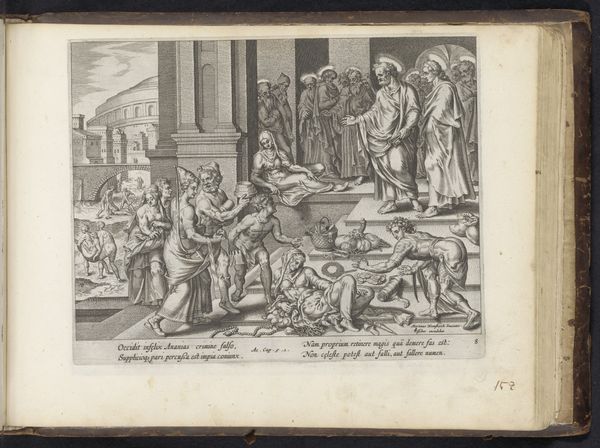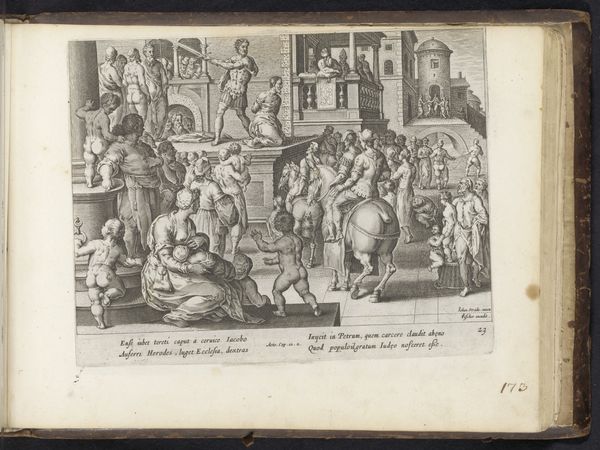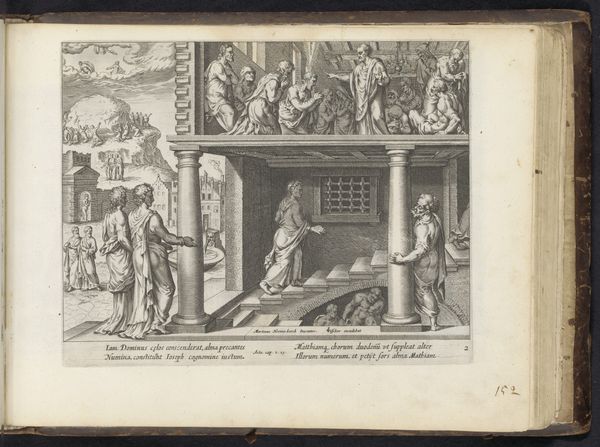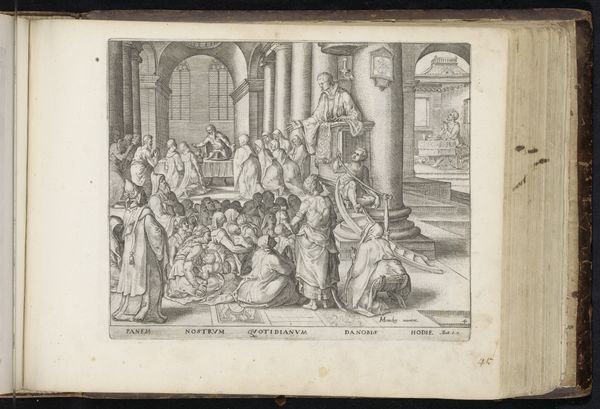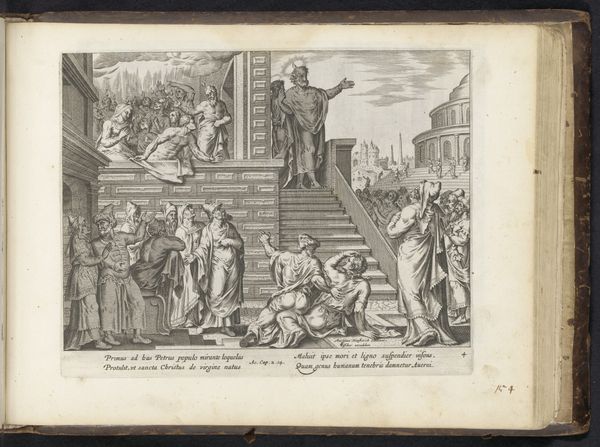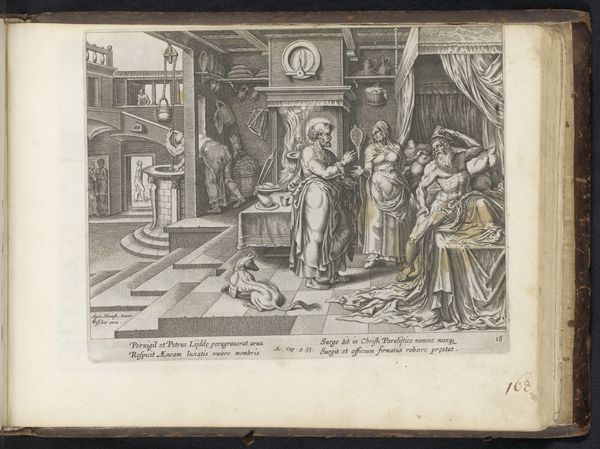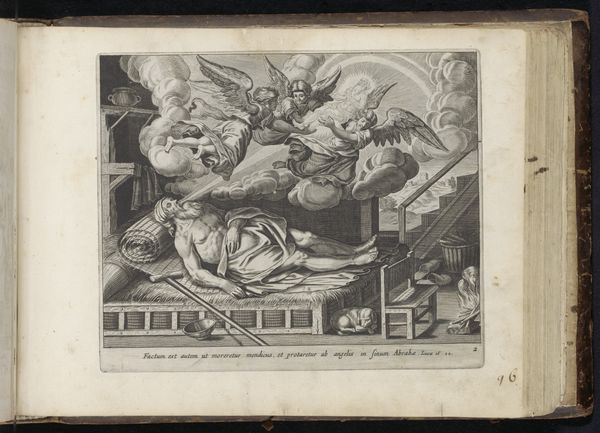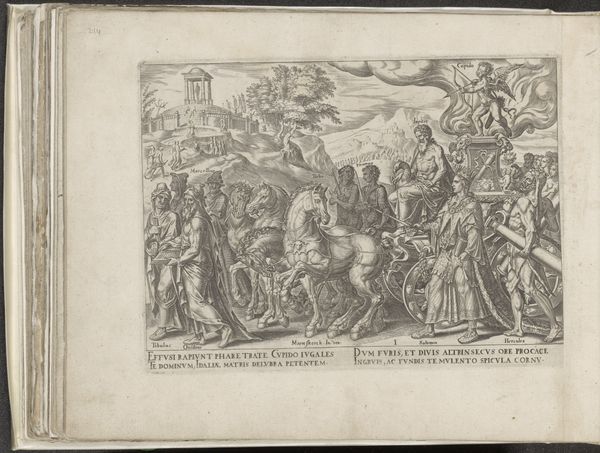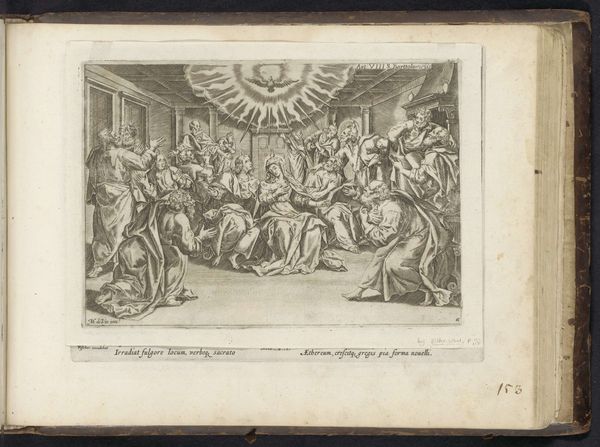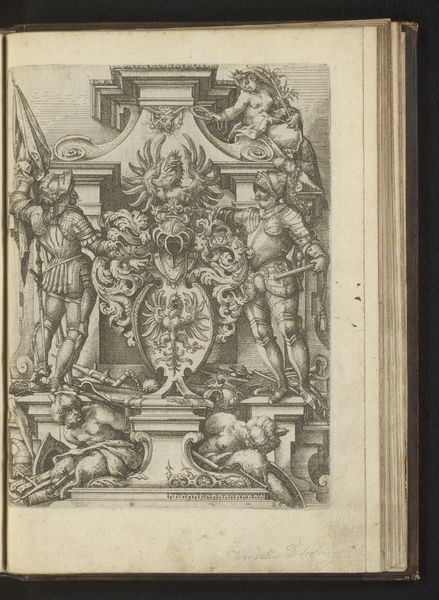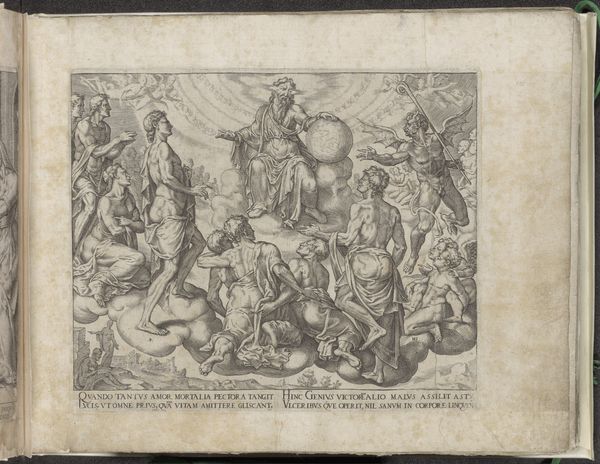
print, ink, pen, engraving
#
aged paper
#
toned paper
# print
#
mannerism
#
ink
#
pen-ink sketch
#
pen work
#
pen
#
history-painting
#
engraving
Dimensions: height 208 mm, width 252 mm
Copyright: Rijks Museum: Open Domain
Curator: Let's turn our attention to this intriguing engraving, "Onze Vader in de hemel, laat uw naam geheiligd worden," created sometime between 1569 and 1646. Its artist is known only as Wierix. What feelings does it evoke in you at first glance? Editor: Well, it strikes me as both grand and intimate, like a whispered prayer in a cathedral. It's busy, but the crisp lines give it a delicate feel, even though there's so much going on. And the aged paper really enhances the mood, like a relic, doesn't it? Curator: The work really showcases the Mannerist style, that exaggerated drama, almost bordering on chaos. The composition is bisected by divine and earthly realms; heavenly figures, balanced somewhat precariously on billowing clouds, oversee a crowded, bustling human scene. Editor: Precisely! And the crowd! It feels a bit like an Old Master's version of a modern-day protest. Are they imploring, pleading, maybe even rebelling? All under the watchful eye of, well, everything above. It really makes you wonder about their power dynamic! Curator: This image can be understood as visualizing the Lord's Prayer. Its power structure mirrors the era’s rigid social hierarchy; God reigning from on high, while the populace is arranged in devotional postures. The choice of pen, ink, and engraving intensifies the artwork's inherent didactic quality as printmaking permitted for broad dissemination. It becomes accessible visual theology, intended for widespread viewership and potentially shaping belief. Editor: Didactic, absolutely, but I think it's more subversive, too. The etching’s tone conveys not just obedience but also struggle. The penwork's detailed nature makes their worries so human. They aren't just following directions! It speaks of humanity trying to touch the untouchable—their raw attempt makes it both moving and profound, not just some Sunday school illustration. Curator: Your read on the underlying social tensions adds depth. Approaching the image from feminist and liberation theology viewpoints unveils powerful counter-narratives, showing marginalized people seeking some voice against worldly oppression. This reading subverts traditional interpretations that primarily stress divine authority. Editor: Well, I do tend to see ghosts in everything! Still, it does leave one contemplating—does divine blessing come to the meek, or is it seized? It’s lovely to encounter something like this so pregnant with thought. Curator: Indeed, seeing this piece at the Rijksmuseum contextualized against Dutch history and religious turmoil really opens fascinating possibilities.
Comments
No comments
Be the first to comment and join the conversation on the ultimate creative platform.
